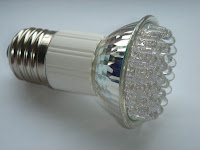This is the time of year where utility usage can go through the roof, given all the extra baking, entertaining, heating, and holiday lights that are on. With that in mind, I wanted to review a few posts from the past that may be of help in reducing your electric and other utility bills.
Why not invest some of your holiday time off and save money for years to come?
Be Productive and Seal Those Gaps
I just moved into a new house a few months ago, and the priority for me was getting my family settled. Now that we are pretty much unpacked and in a routine, I turned my sights to getting the house nice and sealed - and wow am I glad I did!The biggest bang for the buck in my house was checking the HVAC vents. Our house, like many in California, is a crawl space house (i.e. not a slab foundation or house with a basement). Turns out almost every ground floor duct had a gap where it came up to the vent attachment, allowing lots of cold air in! But this is nothing that a $4 can of Great Stuff Insulating Foam could quickly remedy. That link is to Amazon - please click on it to check it out - but I recommend you buy it locally at Ace, Lowes, or Home Depot, and save a few dollars.
Anyway, be sure to check out Mind the Gap for more tips on sealing up your home.
Buy Efficient Holiday Decor
We all know that LED Christmas Lights are more efficient, brighter, and pose less fire risk. And prices continue to drop. Check out Six Ways to a Green Christmas for other ideas that will save money (and automate!) your holiday displays.Energy Saving Gift Ideas
If a friend or family member is into DIY projects, consider helping them in their hobby with some power saving gifts?Start with Shopping Gifts to Turn Black Friday Green, then check out Seven Gifts For The Energy Conscious.
And I'd love to hear about other holiday-centric saving ideas and gifts that fit the Home Power Saver theme. Be sure to come back and comment below.
Happy Holidays!

































